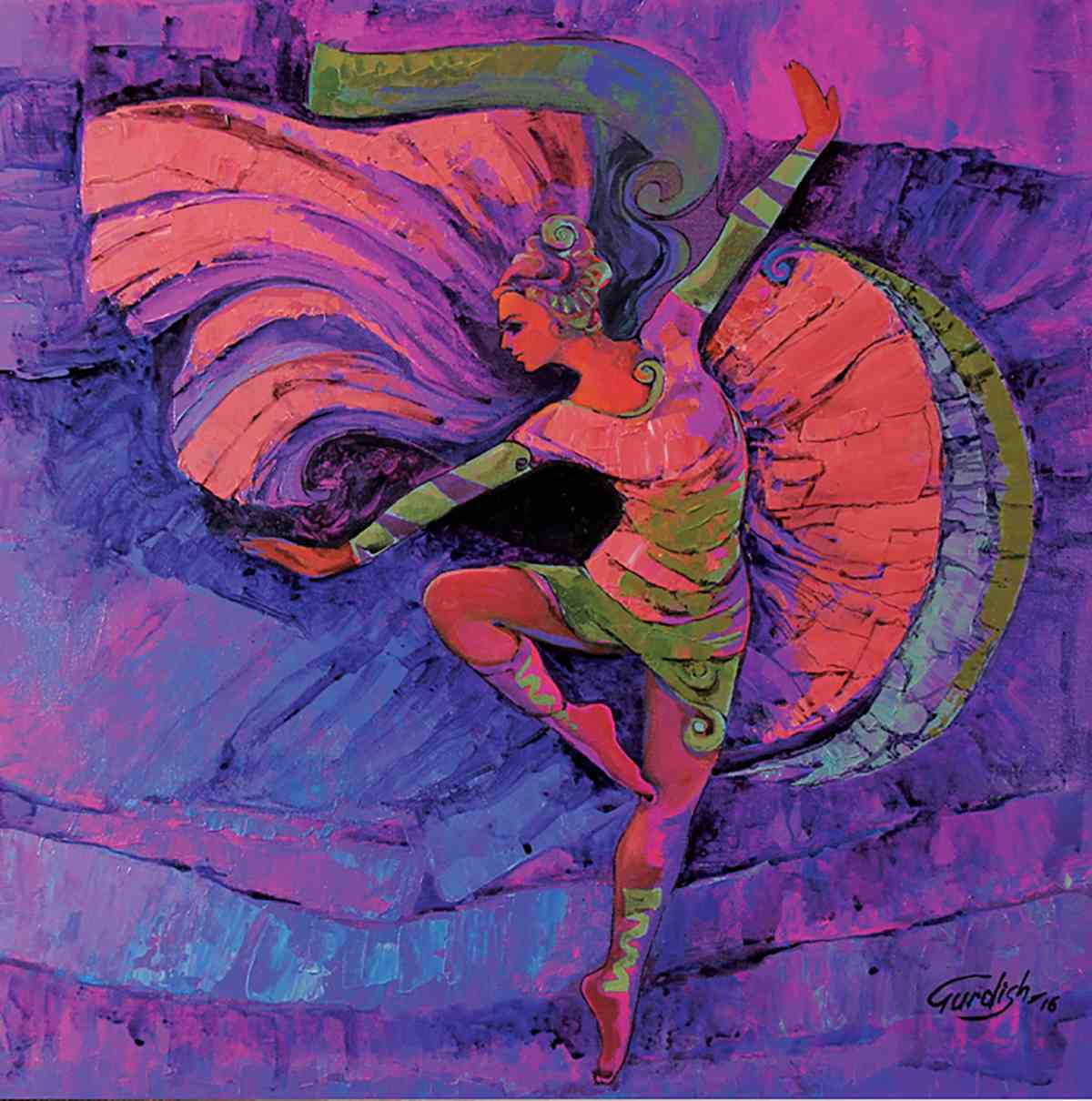
Like a bridge helps people to cross the river, art aids people in eradicating their stress from the roots by offering them a blissful and enchanting sense of relief. Artworks, be it from any generation, genre or types, always make us jitter from the inside by evoking different emotions that sometimes even we are unaware of.
It happens. How many times has it happened that you are looking at an exquisite painting and suddenly a flow of sadness or joy makes you shiver from inside giving you a warmth or cold feeling? You might not even be aware that you can actually feel something like this by just looking at a painting, but yes, it happens.
Humans and art have a long history together. Right from the time when our great ancestors used to live in the caves, art was there. A few years back, archaeologists have discovered wall art from the pre-ancient period that is supposed to be around 10000 years old. The astonishing part is throughout its journey, just like humans, art is constantly evolving and getting better.
For an instance, when we look at the traditional paintings, we see the aesthetic capability of the artists to imitate the real-life events, places, and nature. This genre was quite exclusive accessible to only some elite people. Then came Industrial revolution and hundreds of years of conventions broke down.
The rise of Abstraction
The birth of abstraction signifies a drastic shift in the perception of people’s outlook to not just art but towards the society and life. With the burst of the industrial revolution, middle class rose, and suddenly people began to realize that few things were just not suitably defined or were chained with the myths and beliefs; art was one of those things.
Art is being defined as the expression of emotions, then how could it be that by drawing and painting only the depictions of the real life elements or Godly figures tell the essence of art? This was unacceptable for the artists of the post-industrial revolution and a wave of change started to take shape.
Artists were now focusing more on their imagination and less on the given subject matters to illustrate what good art is. In this league, impressionism was the very first attempt from the artists to shift from the academic style that was seeded deep till the time of wall art. Artists were more interested in showcasing the realities of our present life. They had enough of the glorification of the past, it was the time to focus on present now.
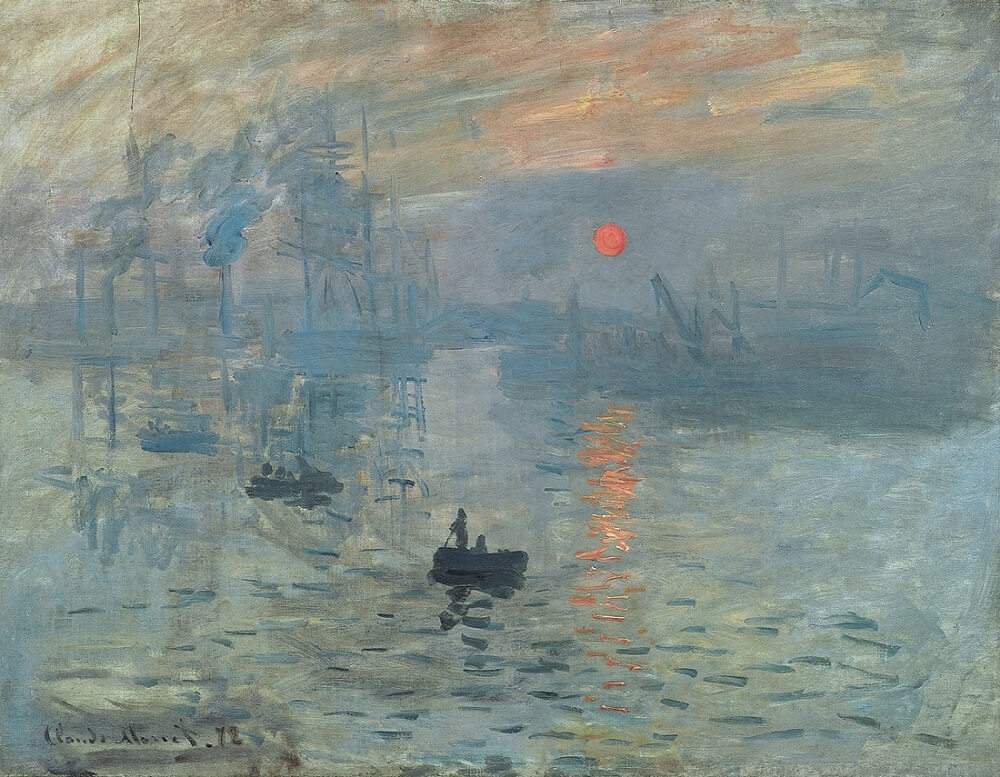 Source: Claude Monet (Sunshine)
Source: Claude Monet (Sunshine)
Initially, artists took nature as their favourite theme to paint some of the best pieces of impressionism movement. The foundation of this art movement was to shift slowly away from the traditional style (by making objects blurry and translucent) where the representation of known objects and focus on the aesthetics played a major role. This change was slow but firm.
Then came other movements like cubism, and fauvism that finally modified the meaning of art for the good. Art was no longer a rich man’s leisure. Anyone & everyone can now access it.
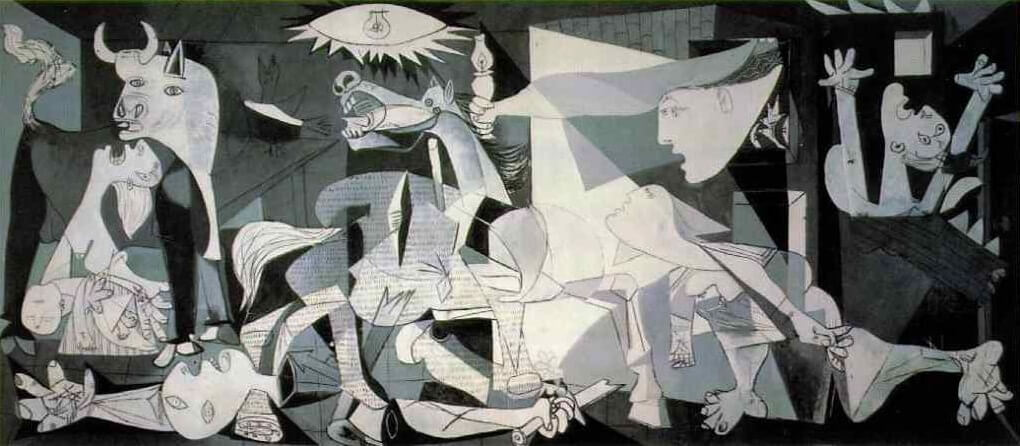 Guernica by Pablo Picasso was one of the best works of cubism
Guernica by Pablo Picasso was one of the best works of cubism
Abstract Art: An idea of togetherness and charisma
I have said it many times and I wouldn’t shy away to say it again ‘Abstract art is our one of the first steps to accomplish uncanny consciousness’. It rejects all the traditional ideas and practices because those rules were not for everyone. Only the people who had immense power was able to commission artists. And then also, the entire recognition and appreciation were awarded to the people for whom the artwork was made. Not until the industrial revolution or let’s say the 16th century, many names emerged and shine in the art world hence.
Abstract art transformed everything, the way we see art, the definition of art, the perception and the definitiveness of art. Abstraction means to shift away from the representation form of art where the depiction of known elements and real-life objects was shunned a new idea took birth.
This was the thought of removing any unfair distinctiveness that separates art. Art is subtle, it is the simplest expression of most complex human emotions. Art is supposed to make people comprehend what is going around them and experience the ecstasy of their own consciousness. One more reason that fuelled the rising of abstraction was philosophy. Modern era, especially the span after the industrial revolution saw the burst of some eloquent and deep thinkers, philosophers, and experts who were highly opinionated and were full of rage and anger because of the not-so-fair balance that our society was in.
When in the mid of the 19th-century modernism jilted the art world for the very first time, the traditional practice advocates took it as a mere rebellion of few junkie and hippie thinkers who call themselves artists. Even the works from the movements like impressionism and cubism were initially called us vague, wobbly, and pretentious as hell. Traditionalists were not happy with the way people’s thinking was taking a U-turn. The status-quo that was carried along with the artworks was now on extinction.
When abstract expressionism finally came in, the entire art community support it because it brought everyone together. There was no class, colour, and academic qualification, just pure art, which is the manifestation of the limitless creativity that is boxed inside each one of our head. Not only the artists, but abstraction also brought the art lovers or the observers an extremely role to play; to interpret.
The beauty of abstraction lies in its ambiguity and rawness. You see an abstract art painting and might feel extremely happy while your friend may feel deeply saddened by observing the same piece. That is the true trait of an abstract painting. The element of uncertainty is what makes abstract art so unique and compelling to observe.
While the non-uniformness is the real appeal of abstraction, quite a lot of art lovers, scholars, collectors, and experts still fail to comply with the impeccable nature of these artworks.
Why is it so? Let’s dig deep in to further strengthen our grip on abstract art.
Abstract Art Styles: The Versatility
Art has been changing faces in its roller-coaster ride of evolution and abstraction, IMHO is the closest we have got till yet when it comes to collaborating creativity with imagination and emotional upstream. The actual conundrum of abstraction lies in its versatility.
When asked what appeals you most about an alluring abstract art painting, what is your answer? Is it the loosely thrown brush strokes, the unstructured designs, the blurriness of unidentified objects, or the fusion of vivacious colours that collectively further stupefy the aesthetic of abstract artworks?
For me, the elements that artists choose to define the uniqueness of abstract work is the most significant aspect. Factors such as lines, designs, dimensions, textures, colours, etc play immensely significant roles in the overall personification of abstract artworks.
A mere gap that is left on an abstract painting is much more than a casual ignorance. There is meaning in every element of an abstract artwork and each observer is subjected to its impact. The interpretation of an abstract art depends on the life experience and the mental state of the observer. That is why abstraction is so subjective in nature. Remember, it is subjective, not meaningless.
If you want to fetch some irretrievable emotional content from an abstract artwork, do not rush in. Take your time and be still in your head. The versatility of an abstract piece can only be understood when you place your head and heart right where they should be.
For an instance, there are black and white abstract art paintings. Both are part of abstract and by giving a subtle look, anyone would not find any other difference other than the colours. Factually, both of the abstract art styles have quite a massive difference.
The point of distinction between black and white abstract paintings is the emotions that flow along with them. Abstract art is supposed to confront our thoughts and mind-set because of it doesn’t, that’s not a piece of abstraction. The black abstract paintings mostly indicate the usage of black colour to represent varied moods of an artist. These colours are merely used as an unsaturated medium to put down a specific or an amalgamation of multiple emotions in one painting.
What artists are able to achieve through the implication of black and white abstract paintings is the subtle utilization of just two colours that are simplest to bring down some of the most complicated human emotions; just with two fundamental colour.
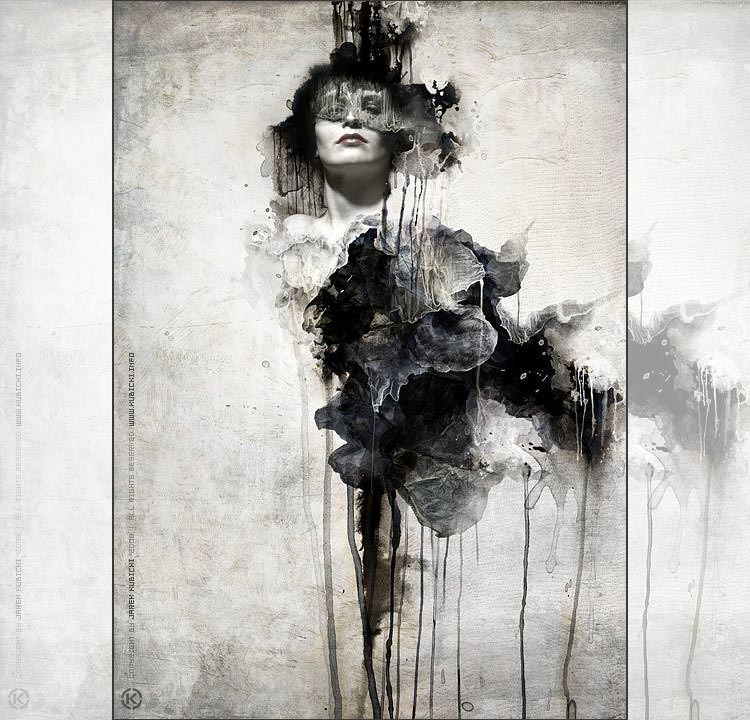
Source: Template.Net
The above illustration is an epitome of how intense, philosophical and idiosyncratic abstract paintings can be. This painting shows us the gorgeous face of a widow whose entire body is fumed as smoke and oil. My interpretation would the face of American or European women who have lost their husband’s lives in the imperialist war on the gulf.
This is just one meaning, there can be countless. You can also look at these paintings of our hypocritical society where women are considered as a beautiful face but the rest of their vitals like emotions, feelings, consent take a back foot and are often seen as a smoke of a fire.
Modern Abstract Art Styles: The Rainbow of Today
Today is the time of contemporary art, the paintings and other works that were created after the 1970s. Famous books and renowned personalities of the art world have stated that the contemporary form is the newest and the freshest form.
What I and some other art aficionados think is that abstraction was the reason why the contemporary genre is able to emerge. A lot of contemporary art paintings have direct inspiration from the abstract art and the similarities are not limited to just the vagueness and blurriness. It is the idea of free thoughts and the concept of liberating art from the shackles of so many traditions and boundaries that brings abstraction and contemporary style closer to each other.
The contemporary form is just another enhancement or evolved state of the art. Abstraction, on the other hand, is fundamental that has laid a solid base for art to keep on evolving for thousands of year ahead.
Even in the contemporary forms, there are modern abstract paintings that have become extremely popular among art lovers. Some of them are:
- Mixed-media abstract work
- Modern abstract art made of acrylics on canvas
- Abstract expressionist
- Funky abstract painting
- Colourful flora abstract painting
People love to buy these artworks from an online or offline art gallery to raise the aura of their homes and offices. But what apart from the sense of emotion generation that hypothesises people with this mysterious form of art? Does abstract really stimulates our creative flair and does it really raises the consciousness level? Decoding these questions, we are now moving to the next part of this epic voyage of abstract art and its comprehension.
Abstract Art: Bridging Consciousness
The reason why it was quite difficult for the traditionalists and even to some of the art experts today hard to accept the blissfulness of abstraction is that of restrictions that human brain put in.
Our mind absorbs visuals. Anything that you have seen it past if you see it even in the distant future (let’s say after 10 years) your brain quickly recollect the image and pass the information to your senses making a connection instantly or eventually.
A painting of a serene mountain and a gorgeous plain land aside depicts known elements that your brain is already familiar with. So, our brain works at a swifter pace when it is exposed to the objects that it already knows.
A newbie in the art world, when exposed to an abstract art straightaway would regard the painting as pointless and rubbish. The response is justified because our brain tells us so.
This is why it is said that you require to not focus on the aesthetics but on the individual elements of an abstract painting. A simple disoriented pattern in abstract artwork may make you feel the disappointments you have faced in life or a ferocious colour composition may energize you instantly reminding of you the recent adventure trip you had.
It could be anything but not pointless. Our brain when exposed to objects that are not related to real-life, is concurred by the abstraction to dig out the meaning on itself. This is what creativity is.
Abstraction empowers to observe things in a totally unique and different way than the common people. This is why abstract art styles are known to induce the sense of liberation and tolerance that makes us more swayable and approachable to anything new. It helps us create new designs, words, ideas, and a bigger picture for the longer run.
An artist’s hard work and sweat are supposed to go in vain if the artwork is not able to pin out the emotional and perceptual engagement of the viewer. And for the involvement of the observer, the mind should be stimulated to let new elements enter and make sense of the unstructured patterns and unidentifiable compositions. This is where abstract art does the trick. It increases the consciousness level of our brain by striking the untouched parts that fumes creativity inside us.
Look at this mesmerising creation by eminent American artist, Jackson Pollock, who gathered accolades and appreciation for his unique drip painting style.
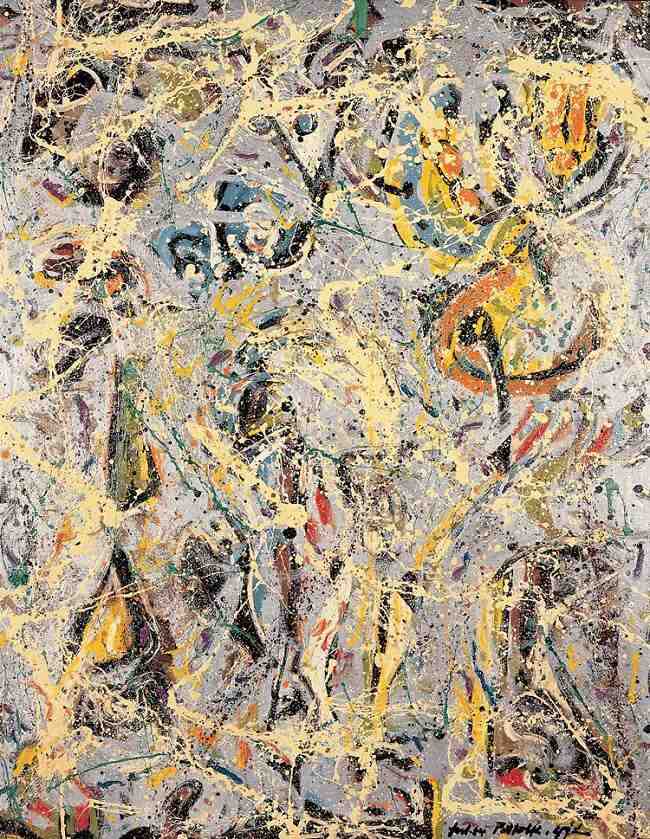
Source: Jackson Pollock
Observing such paintings is onerous, but once you start getting which element is playing what part, decoding abstract art would be not only easy but fun too. The above painting again presents a fine example of how precisely (even though it may seem random) all of the elements are being placed and how simple expressions can be put up with uneven lines and not-so-obvious brush strokes.
Final Words
So, abstraction is the expression of free thoughts and ideas that are meant to stimulate emotions of your heart and mind. Even if you are not able to decipher the hidden clues in these artworks, it doesn’t mean that you are incompetent or have less IQ. It just means that your mind is still not exposed to something much exciting and that is why the confusion surrounds you. Take time, give time, be patient, don’t panic, try to focus on the individual elements and sooner or later, you will too understand what pulls people closer to abstraction.
Abstract art paintings are good for your brain. Your thinking process will expand to a wider space and you will experience that you have become much more creative and inventive in your approach. Still, if you feel more anxious about abstract art, reach us in the comment section and we will try to ease your trouble. Thanks!





















